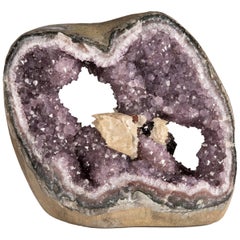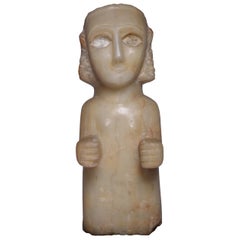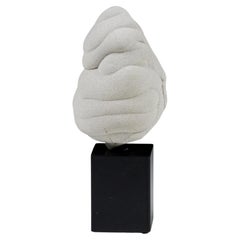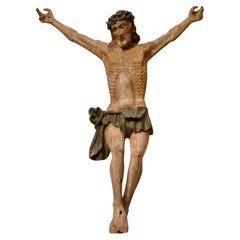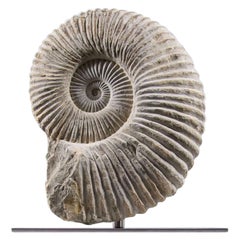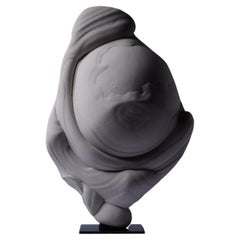15th Century and Earlier Decorative Objects
Uruguayan Antique 15th Century and Earlier Decorative Objects
Agate, Amethyst, Quartz
Yemeni Antique 15th Century and Earlier Decorative Objects
Alabaster
French Antique 15th Century and Earlier Decorative Objects
Stone
German Gothic Antique 15th Century and Earlier Decorative Objects
Wood
North African Prehistoric Antique 15th Century and Earlier Decorative Objects
Limestone, Stainless Steel
French Antique 15th Century and Earlier Decorative Objects
Sandstone
Italian Classical Roman Antique 15th Century and Earlier Decorative Objects
Porphyry
Uruguayan Antique 15th Century and Earlier Decorative Objects
Agate, Amethyst, Quartz
Antique 15th Century and Earlier Decorative Objects
Wood
Spanish Gothic Antique 15th Century and Earlier Decorative Objects
Softwood
North African Antique 15th Century and Earlier Decorative Objects
Stone
Uruguayan Antique 15th Century and Earlier Decorative Objects
Agate, Amethyst, Quartz
Uruguayan Antique 15th Century and Earlier Decorative Objects
Agate, Amethyst, Quartz
Brazilian Antique 15th Century and Earlier Decorative Objects
Quartz, Tourmaline
Uruguayan Antique 15th Century and Earlier Decorative Objects
Amethyst, Quartz
Uruguayan Antique 15th Century and Earlier Decorative Objects
Agate, Amethyst, Quartz
Uruguayan Antique 15th Century and Earlier Decorative Objects
Agate, Amethyst, Quartz
Antique 15th Century and Earlier Decorative Objects
Natural Fiber
North African Prehistoric Antique 15th Century and Earlier Decorative Objects
Bronze, Enamel
Dutch Gothic Antique 15th Century and Earlier Decorative Objects
Wood
Egyptian Egyptian Antique 15th Century and Earlier Decorative Objects
Limestone
North African Prehistoric Antique 15th Century and Earlier Decorative Objects
Limestone
Italian Classical Greek Antique 15th Century and Earlier Decorative Objects
Terracotta
Antique 15th Century and Earlier Decorative Objects
Oak
North African Prehistoric Antique 15th Century and Earlier Decorative Objects
Limestone
Malagasy Prehistoric Antique 15th Century and Earlier Decorative Objects
Limestone
North African Prehistoric Antique 15th Century and Earlier Decorative Objects
Limestone, Stainless Steel
Uruguayan Antique 15th Century and Earlier Decorative Objects
Agate, Amethyst, Quartz
Afghan Antique 15th Century and Earlier Decorative Objects
Lapis Lazuli
Uruguayan Antique 15th Century and Earlier Decorative Objects
Agate, Amethyst, Quartz
Classical Roman Antique 15th Century and Earlier Decorative Objects
Marble
British Prehistoric Antique 15th Century and Earlier Decorative Objects
Limestone, Bronze
Antique 15th Century and Earlier Decorative Objects
Oak
Antique 15th Century and Earlier Decorative Objects
Amethyst, Malachite, Multi-gemstone, Quartz
Han Antique 15th Century and Earlier Decorative Objects
Acrylic, Terracotta
North African Prehistoric Antique 15th Century and Earlier Decorative Objects
Bronze
French Gothic Antique 15th Century and Earlier Decorative Objects
Walnut
North African Prehistoric Antique 15th Century and Earlier Decorative Objects
Limestone, Brass
American Antique 15th Century and Earlier Decorative Objects
Bone
French Gothic Antique 15th Century and Earlier Decorative Objects
Limestone
Antique 15th Century and Earlier Decorative Objects
Marble
Antique 15th Century and Earlier Decorative Objects
Petrified Wood
Uruguayan Antique 15th Century and Earlier Decorative Objects
Agate, Amethyst, Quartz
Antique 15th Century and Earlier Decorative Objects
Stone
Antique 15th Century and Earlier Decorative Objects
Wood
Greek Classical Greek Antique 15th Century and Earlier Decorative Objects
Stone, Marble, Metal
Brazilian Antique 15th Century and Earlier Decorative Objects
Stone
Uruguayan Antique 15th Century and Earlier Decorative Objects
Agate, Amethyst, Quartz
Brazilian Antique 15th Century and Earlier Decorative Objects
Crystal, Quartz, Rock Crystal, Bronze
Uruguayan Antique 15th Century and Earlier Decorative Objects
Agate, Amethyst, Quartz
European Gothic Antique 15th Century and Earlier Decorative Objects
Iron
Italian Renaissance Antique 15th Century and Earlier Decorative Objects
Marble
Lebanese Prehistoric Antique 15th Century and Earlier Decorative Objects
Limestone
Uruguayan Antique 15th Century and Earlier Decorative Objects
Agate, Amethyst, Quartz
Italian Louis XV Antique 15th Century and Earlier Decorative Objects
Wood
Uruguayan Antique 15th Century and Earlier Decorative Objects
Agate, Amethyst, Quartz
Malagasy Antique 15th Century and Earlier Decorative Objects
Sandstone
Mexican Antique 15th Century and Earlier Decorative Objects
Onyx
Read More
Kazuyo Sejima’s Flowering Tree Blooms Year-Round
The brilliantly simple design turns a modest bouquet into a major statement.
He Wrote ‘Oedipus Rex,’ but Do You Know What He Looked Like?
The Greek tragedian is said to have been handsome in his day.
Cigar Culture Was Once the Peak of Masculinity. Now, It’s a Compelling Curiosity
Even for those who don’t indulge, elegant smoking accessories and audacious art portraying cigar enthusiasts hold a nostalgic allure.
African Travel Plans on Hold? This Ardmore Leopard Vase Brings the Beauty of the Savanna to You
It’s an excellent example of the sought-after ceramics coming out of South Africa’s KwaZulu-Natal province.
With a High-Tech Flagship and Cool Collabs, Lladró Is Breaking the Mold for Porcelain Production
Thanks to its new leadership, the Spanish maker of figurines, busts and lighting is on a mission to update the art of porcelain for the 21st century.
Zoë Powell’s Magnolia 05 Vessel Is Handmade from Clay She Unearthed Herself
The free-form stoneware piece is inspired by the magnolia tree and its associations with home.
8 Ways to Breathe New Life into a Space with Plants
The pair behind the Instagram account @houseplantclub share their tips for making any room of the house gloriously green.
Paris Gallerist Sandy Toupenet Gets Fired Up over 20th-Century Ceramics and Inventive New Makers
Her space on the city’s Left Bank mixes mid-century pieces by the likes of Jean Cocteau and Pablo Picasso with whimsical contemporary creations.
